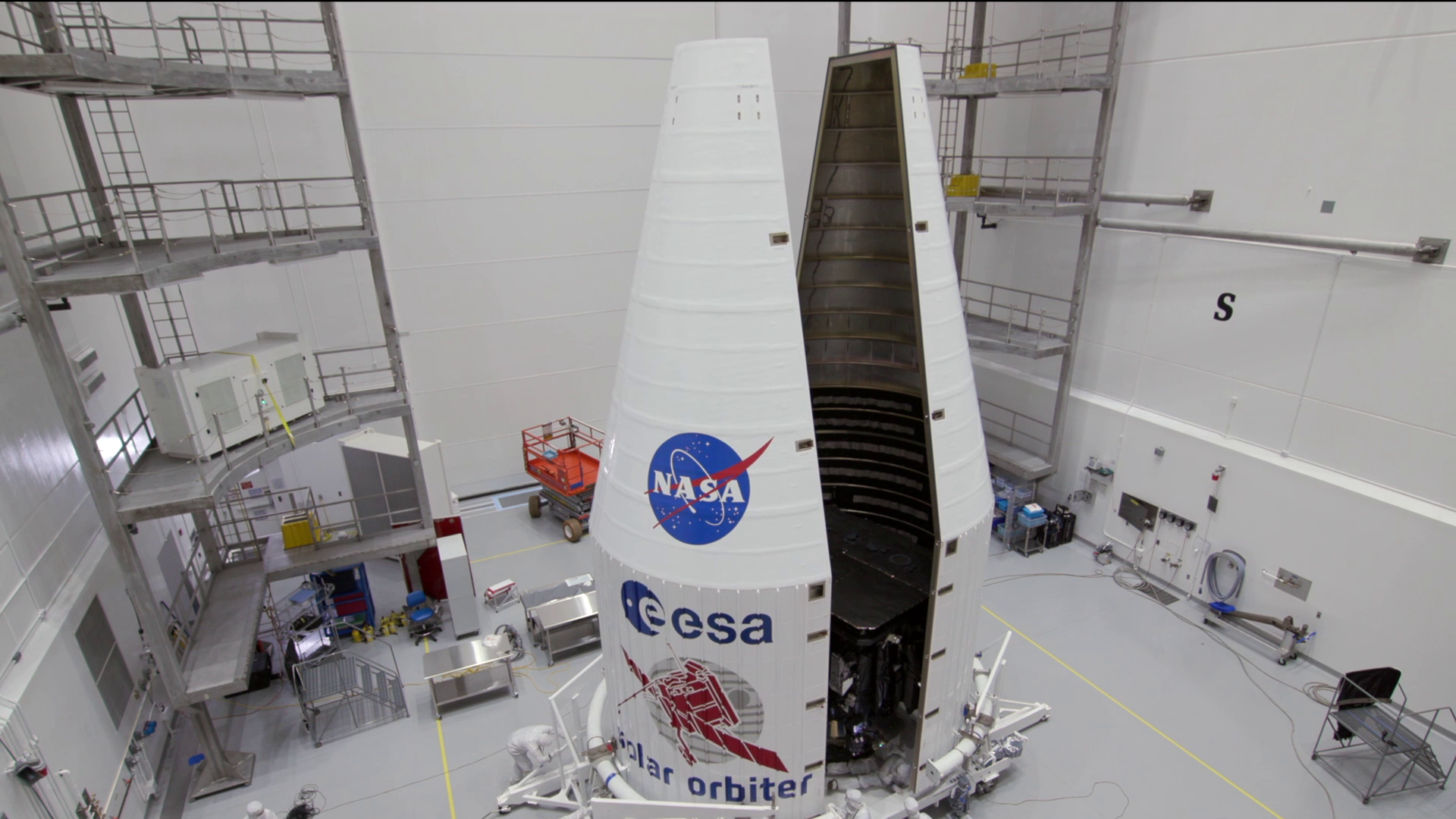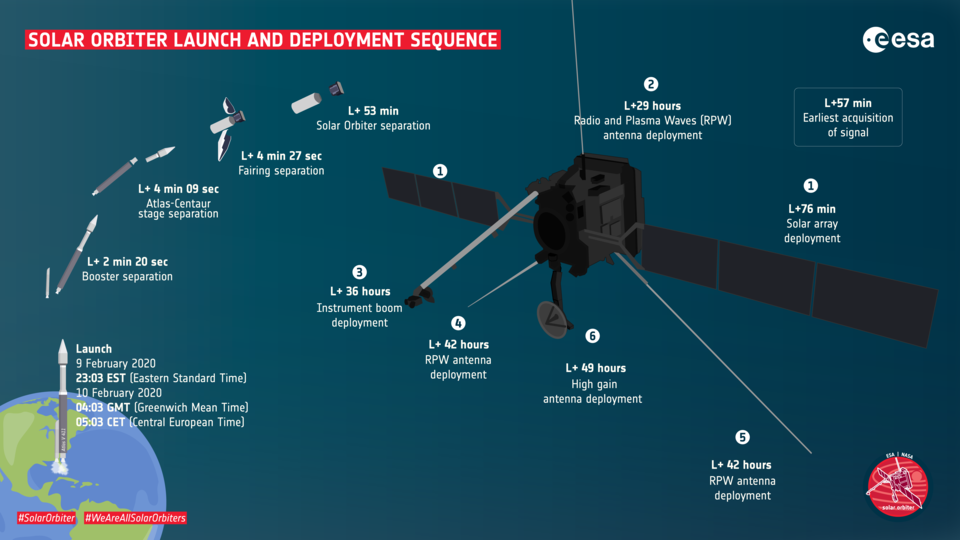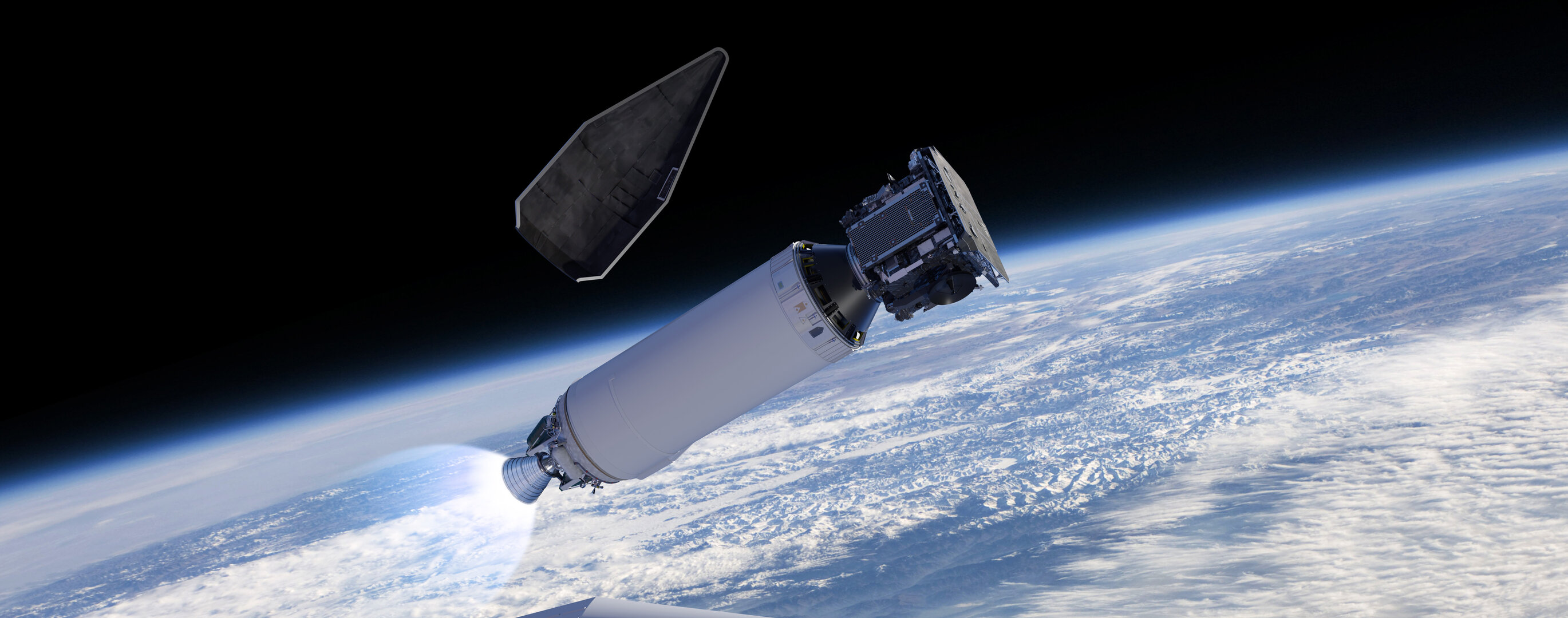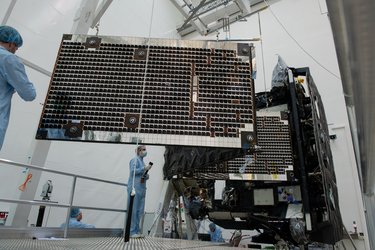Watch Solar Orbiter launch live
Watch the launch of ESA’s new powerful Sun explorer, Solar Orbiter, on ESA Web TV on Monday 10 February from 03:30 GMT (04:30 CET).
ESA’s new Sun-exploring mission, Solar Orbiter, is set for launch at 04:03 GMT (05:03 CET) on Monday 10 February 2020. The sophisticated spacecraft, equipped with a set of instruments for imaging the surface of our parent star and measuring the properties of the environment in its vicinity, will make a closer approach to the Sun than any European satellite before.


Access the video
From its unique elliptical orbit, the satellite will view some of the never-before-seen regions of the Sun, including the poles, and shed new light on some of the little understood aspects of the star’s activity, such as the formation of the solar wind. The mission will also provide data about the Sun’s magnetic field and how it arises.
Knowledge of our nearest star is key to unravelling how stars work in the Universe, but understanding solar activity is also critical for the infrastructure on and around Earth. Powerful ejections of solar plasma can cause geomagnetic storms that disrupt electrical and telecommunication networks on the ground as well as the operations of satellites orbiting our planet.
Solar Orbiter will get as close as 42 million km to the Sun, about a quarter of the distance between the Sun and Earth. The spacecraft and its components, including its 18-m solar array (as measured from tip to tip), were designed to survive in the scorching temperatures of up to 500°C and withstand constant bombardment by highly charged particles of the solar wind for at least seven years.

Solar Orbiter will separate from the rocket about 53 minutes after launch and is expected to send its first signal to the ground shortly thereafter. The signal acquisition will be announced from the European Space Operations Centre (ESOC), in Darmstadt, Germany, which will operate the entire mission.
ESA TV Programme live from Cape Canaveral
Watch live via ESA Web TV 03:30 – 07:00 GMT (04:30 – 08:00 CET)
Key moments:
03:30 GMT (04:30 CET) – Broadcast starts
04:03 GMT (05:03 CET) – Liftoff
04:55 GMT (05:55 CET) – Solar Orbiter spacecraft separation
04:59 GMT (05:59 CET) – Earliest signal acquisition opportunity
05:19 GMT (06:19 CET) – Expected solar array deployment
05:20 GMT (06:20 CET) – Official speeches
Follow online
Join the conversation online with the hashtags #SolarOrbiter and #WeAreAllSolarOrbiters.
For live updates follow @ESASolarOrbiter and @esascience.
Twitter coverage will also include insights from ESA’s European launch media event hosted at ESA’s European Space Operations Centre, ESOC, in Darmstadt, Germany.
Press release
A press release will be issued following confirmation of Solar Orbiter acquisition of signal.
Solar Orbiter is an ESA-led mission with strong NASA participation. The spacecraft will study the Sun, its outer atmosphere and what drives the dynamic outflow of solar wind that affects Earth. The spacecraft will observe the Sun's atmosphere up close with high spatial resolution telescopes and compare these observations with measurements taken in the environment directly surrounding the spacecraft – together creating a detailed picture of how the Sun affects the space environment around Earth and further out in the Solar System. Thanks to its unique and difficult to achieve orbit, Solar Orbiter will also provide the first pictures of the Sun's polar regions, offering key insights into the poorly understood magnetic environment there, which helps drive the Sun’s 11-year solar cycle and its periodic outpouring of solar storms. Solar Orbiter relies on a combination of 10 instruments, built throughout Europe and in the United States, carefully chosen and designed to support and amplify each other’s observations, together providing the single most comprehensive and integrated view of the Sun and its environment ever achieved.














 Germany
Germany
 Austria
Austria
 Belgium
Belgium
 Denmark
Denmark
 Spain
Spain
 Estonia
Estonia
 Finland
Finland
 France
France
 Greece
Greece
 Hungary
Hungary
 Ireland
Ireland
 Italy
Italy
 Luxembourg
Luxembourg
 Norway
Norway
 The Netherlands
The Netherlands
 Poland
Poland
 Portugal
Portugal
 Czechia
Czechia
 Romania
Romania
 United Kingdom
United Kingdom
 Slovenia
Slovenia
 Sweden
Sweden
 Switzerland
Switzerland































